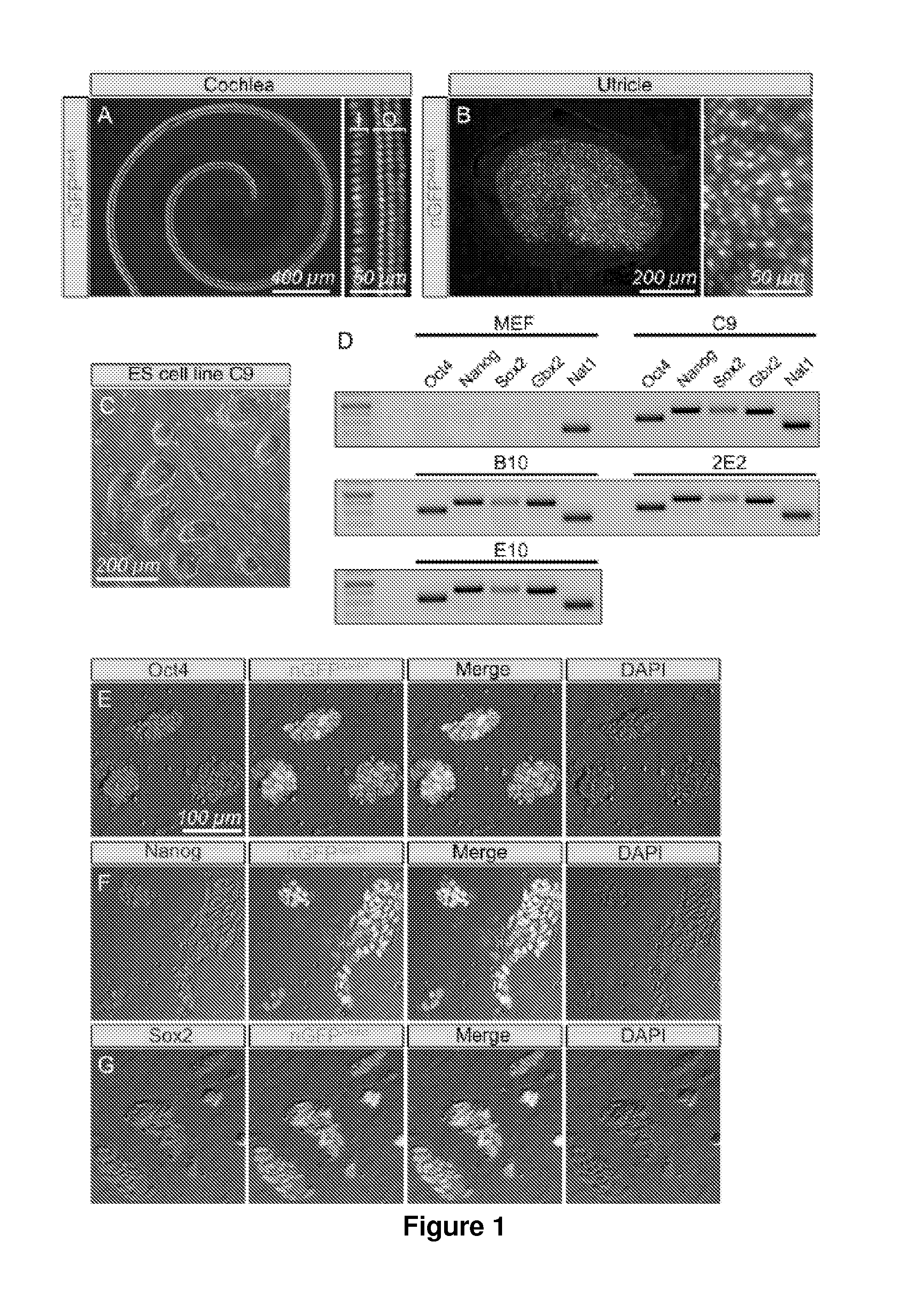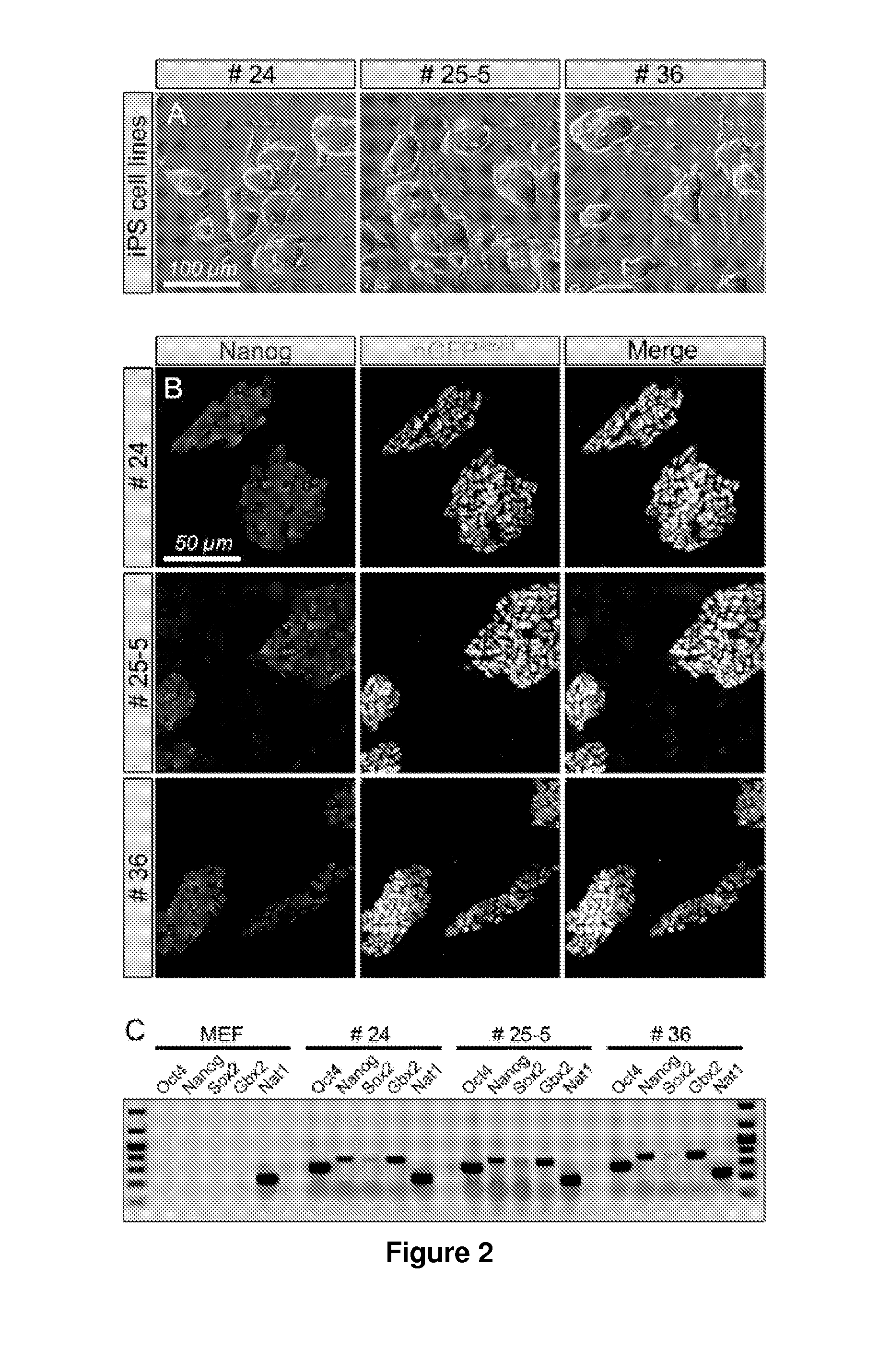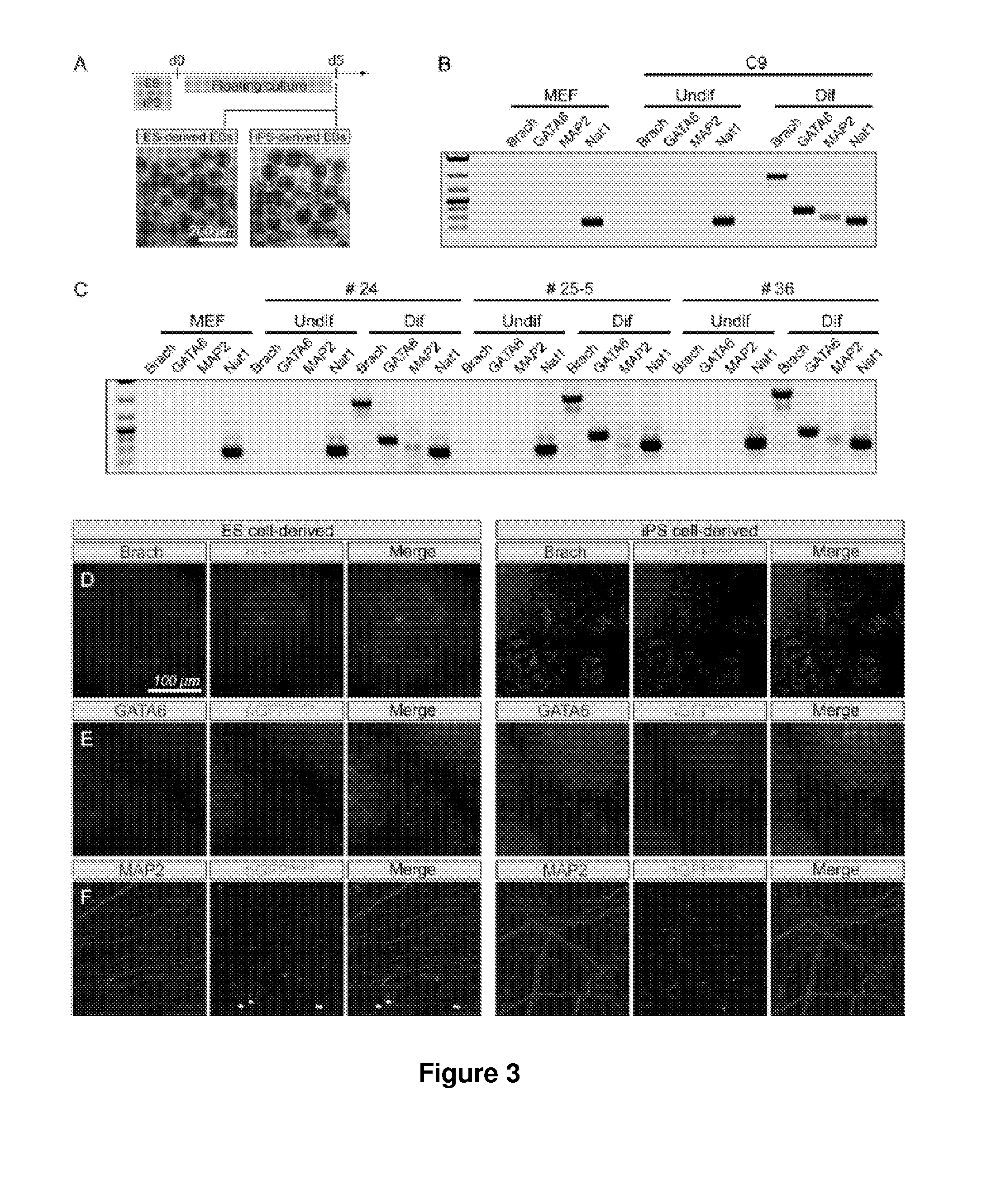Methods for Generating Inner Ear Cells in Vitro
- Summary
- Abstract
- Description
- Claims
- Application Information
AI Technical Summary
Benefits of technology
Problems solved by technology
Method used
Image
Examples
example 1
Materials and Methods
[0146]Cells and Culture.
[0147]ESCs were isolated from blastocysts, and iPSCs were generated from fibroblasts of Math1 / nGFP mice (Lumpkin et al., 2003).
[0148]ES Cell Derivation.
[0149]Blastocysts were collected from superovulated homozygote Math1 / nGFP females mated with homozygote Math1 / nGFP males. Removal of the zona pellucidae of the blastocysts was aided by brief exposure to acidic Tyrode's solution, and the denuded blastocysts were individually transferred onto mitotically inactivated MEF feeder cells in 96-well plates in ES cell medium consisting of Knockout D-MEM (Invitrogen) supplemented with 15% ES cell-qualified fetal bovine serum (FBS) (Omega Scientific, Inc), 0.1 mM MEM non-essential amino acids (Invitrogen), 55 mM 2-mercaptoethanol (Invitrogen), 2 mM L-glutamine (Invitrogen), 50 mg / ml ampicillin and 1000 U LIF / ml (Rat ESGRO, Chemicon). MEFs were inactivated for three hours with 10 mg / ml mitomycin C (Sigma). After 7 days, the inner cell masses were diss...
example 2
Generation of Human Inner Ear Sensory Hair Cells and Supporting Cells from Embryonic Stem Cell-Derived Otic Progenitor Cells
[0205]Human embryonic stem cells are cultured in non-adherent conditions for a defined period of time (5-20 days, and preferably about 15 days) in a series of knockout serum replacement (KSR) Differentiation Media comprising a stepwise reduction in knockout serum replacement (KSR) (20% KSR for days 1-6), 15% KSR for days 7-12) and 10% KSR for days 13-15) and factors or compounds added that a) suppress the formation of endodermal and mesodermal cells, thereby enriching for ectodermal cell fate, and b) rostralize / anteriorize the cell population. Examples of factors and compounds that are effective for (a) include but are not limited to inhibitors of TGFbeta signaling such as SIS3 (specific inhibitor of Smad3) and inhibitors of Wnt signaling such as Dkk1, Fz8-Fc, or a small compound inhibitor such as IWP2. Examples of rostralizing factors for the purpose mentioned...
PUM
 Login to View More
Login to View More Abstract
Description
Claims
Application Information
 Login to View More
Login to View More - R&D
- Intellectual Property
- Life Sciences
- Materials
- Tech Scout
- Unparalleled Data Quality
- Higher Quality Content
- 60% Fewer Hallucinations
Browse by: Latest US Patents, China's latest patents, Technical Efficacy Thesaurus, Application Domain, Technology Topic, Popular Technical Reports.
© 2025 PatSnap. All rights reserved.Legal|Privacy policy|Modern Slavery Act Transparency Statement|Sitemap|About US| Contact US: help@patsnap.com



